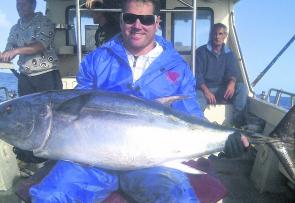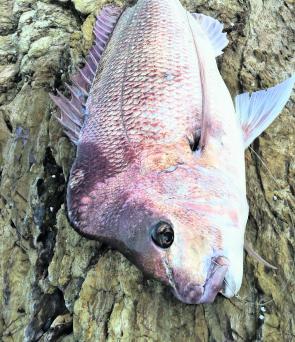It’s snapper time on the South Coast and this is the best month of the year to seek out a trophy red.
There are several reasons you should be eager to get out and target snapper right now.
It’s the annual cuttlefish spawning migration and the snapper are also inshore to breed themselves, which means the big fish are right in close.
Whether you choose to fish from the shore or from a boat it won’t matter because the fish will be predominantly occupying the shallows.
If you are boat-based, anywhere from 8m to 30m is the kind of depth where you should concentrate your efforts.
Going deeper than 30m at this time of year will usually result in smaller fish finding your baits or plastics although the odd big fish will still be encountered in the deep and you will also find an abundance of big mowies.
When I used to fish soft plastics for reds from a boat, the real hot spot seemed to be that zone where you lost sight of the bottom when looking over the side with polarised sunglasses. Depending on the prevailing water clarity, this could vary by 10m in differing conditions.
It always seemed that the snapper bite was much more aggressive on the edge of where bottom visibility disappeared.
However, when it comes to a floating cuttlefish carcass, all the rules go out the window because the snapper lose all caution at times and will rip and tear the daylights out of the floating meal and are often clearly visible on the surface.
I have witnessed big snapper feeding on cuttlefish off the backs of breaking waves on the beach in 2m of gin-clear water in quiet bays right next to the rocks in the middle of the day.
In this situation the fish usually eat any bait or lure cast near the mayhem.
But if the fish are getting full and feeding less aggressively, a piece of cuttlefish or squid or a totally white plastic will still tempt a greedy snapper.
Often fish caught off floaters will have a bulging gut full of cuttlefish.
My friend and gun land-based snapper fisherman Dean Heycox once caught a 6kg snapper that had a whole belly section of cuttlefish the size of a dinner plate in its stomach.
So far this season Dean has snared a pair of 5kg fish off the rocks and most recently a stunning 7kg red that bore on its shoulder the scar of a past spearfishing encounter. The picture hereabouts however shows the unscarred side of the fish.
This month will also be one to head wide in search of tuna and if the lead-up to this report is anything to go by, it will be all about southern bluefin and albacore rather than yellowfin.
The first blues arrived off Batemans Bay in late May, which is really early, before a yellowfin was even caught! The fish were 50kg-100kg and caught along the 1000-fathom line in a prominent south-north current.
If last year is anything to go by the bluefin madness should be in full swing by the time you read this.
Reasonable numbers of albacore are around now too but the yellowfin tuna numbers are thin and sporadic. Still, there have been some yellowfin around 20kg-60kg if you luck onto one.
A few broadbill are showing up for those who brave the night shift and I expect Brett O’Connor on Oportunitee to tangle with one or two before the season is done; he certainly has been putting in the hours at night when the weather dictates.
In the Clyde River the jewfish bite continues to impress with multiple fish captures the talk of the town. Most of the fish I have been hearing about have been under 10kg but still well worth pursuit.
Big flathead are still about in numbers but are fairly sluggish in the cold water.
Casting to seemingly dead water and not getting a bite, then spooking numerous big flathead as we paddle to the next patch is a little perplexing.
Repeated casts to the same area to try to extract a territorial bite can often work on shut-down fish. Sure, it can be boring flogging the same spot for a bite but it beats scaring fish and catching nothing.
In the surf there has been some great tailor action on baits, metals and plastics. Fish averaging 2kg with some significantly larger ones will be on offer this month.
Casting big poppers is the way to really entice the biggest fish in the school and it’s definitely the most exciting form of fishing. Early mornings and late afternoons are by far the most productive time to chase them.
Some big jewfish and gummy sharks should be prowling the surf after dark if you are keen enough to brave the cold. With night temps approaching zero, make sure to really rug up and don the waders to make the best of the situation.
Reads: 1792
Josh fished with Topcat Charters for this cracking bluefin tuna.

Dean Heycox has been finding some quality snapper off the rocks recently and there’s no better time than now.

The author’s 7kg knobby captured on a recent solo mission. Big fish like these will be right in the shallows this month.




